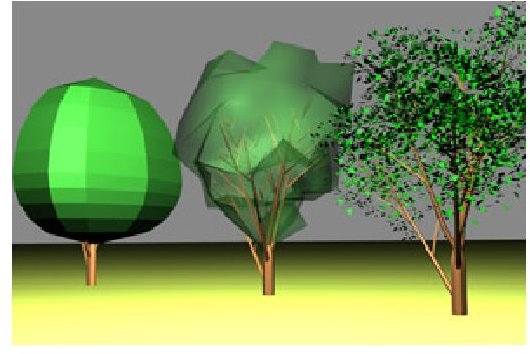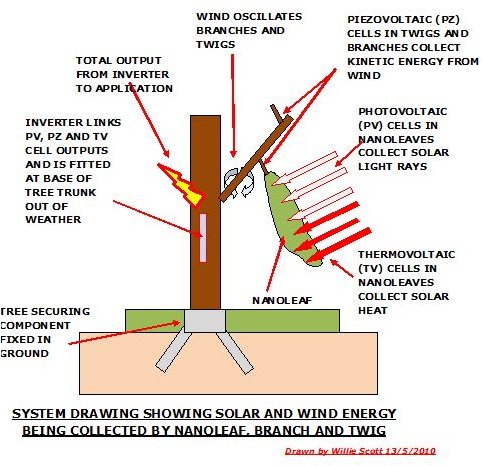Nano Solar Photovoltaic Technologies
Introduction to Nanoleaves Technology
Nanoleaves and stems are an emerging form of renewable energy through collecting energy from the sun and wind and converting it to electrical energy.
The leaves are distributed throughout artificial trees and plants, and when operating at optimum efficiency can supply a whole household with electricity.
This is an article on renewable energy, and in particular the innovative technology of artificial trees and leaves known as Biomimicry. We begin with an overview of Biomimicry.
Biomimicry Technology Overview
The design of the nanoleaves is based on the principles of photosynthesis, a natural process where plants extract the light from solar energy, and along with CO2 from the atmosphere, convert it to starches and oxygen, the oxygen being emitted to the atmosphere.
However, nanoleaves development has gone a step further, in that they are capable of harvesting the thermal and light energy from the sun’s energy and convert it to electricity. The stems of the nanoleaves are designed to collect kinetic energy from the wind, which they also convert to electrical energy.
Design of Nanoleaves
Solar nano technology is used to collect thermal, light, and wind energy, the leaves and stems incorporate minuscule cells, as explained below;
- Thermal Energy
This is captured through the use of thermovoltaic (TV) cells which convert thermal energy into electricity by using semi-conducting materials (a material which is between a metal and an insulator; its conductivity increasing with temperature rise).
- Light Energy
Light energy is captured by the use of photovoltaic cells (PV), which convert the energy inherent in solar light rays into electricity.
- Kinetic Energy
The kinetic energy contained in wind causes the nanoleaf stems, twigs, and branches to oscillate. This motion is captured by piezovoltaic (PZ) cells using a semi-conductor device embedded in these components, converting the kinetic energy of the wind to electrical energy.
Applications of Electrical Energy from Nanoleaves
The photovoltaic, piezovoltaic and thermovoltaic energy harvesters are linked to individual junction boxes, from where they are amalgamated and fed collectively into an inverter. This converts the electricity from Direct Ccurrent (DC) into Alternating Current (AC) the electrical power now being suitable for domestic or industrial use.
The manufacturers of the system (https://www.solarbotanic.com) estimate that a six meter area of nanoleaves canopy will generate enough electrical power to supply an average household.
There are many places were the artificial trees and shrubs can be positioned as noted below;
- Deserts
The power supplied by these trees “planted” in the desert can be used to power desalination plants to produce fresh water from seawater and brackish water aquifers. This water can then be used for drinking and land irrigation, without any environmental damage to the fragile desert environment.
Trees can be planted alongside oases and over fresh water aquifers, with the electricity produced used to power down-hole pumps, enabling water to be piped to other locations.
When planted along the desert roadways, trees will supply shade as well as protection from the sun, wind, and sandstorms.
- Parks, Recreation Grounds, and Golf Courses
The electricity produced can be used to charge electrically powered ground maintenance vehicles such as grass cutters as well as electrically powered hand tools like grass trimmers and pruning shears. When planted on golf courses the power produced can be used to charge golf buggies as well as electrically powered ground maintenance vehicles.
- Office Car Parks and Industrial Units
Trees planted in these locations will not only supply electrical power for the office and industrial units, but add aesthetic qualities to an otherwise drab area, whilst providing shade from the wind and sun.
Images - Solar Nano Technology Process (http://www.solarbotanic.com)



Internet Sites Visited
https://www.alternativeenergyfoundation.org/releases/2009/totally-generate-renewable-electricity/
https://www.solarbotanic.com/nanoleaves/ (Images used with permission)
